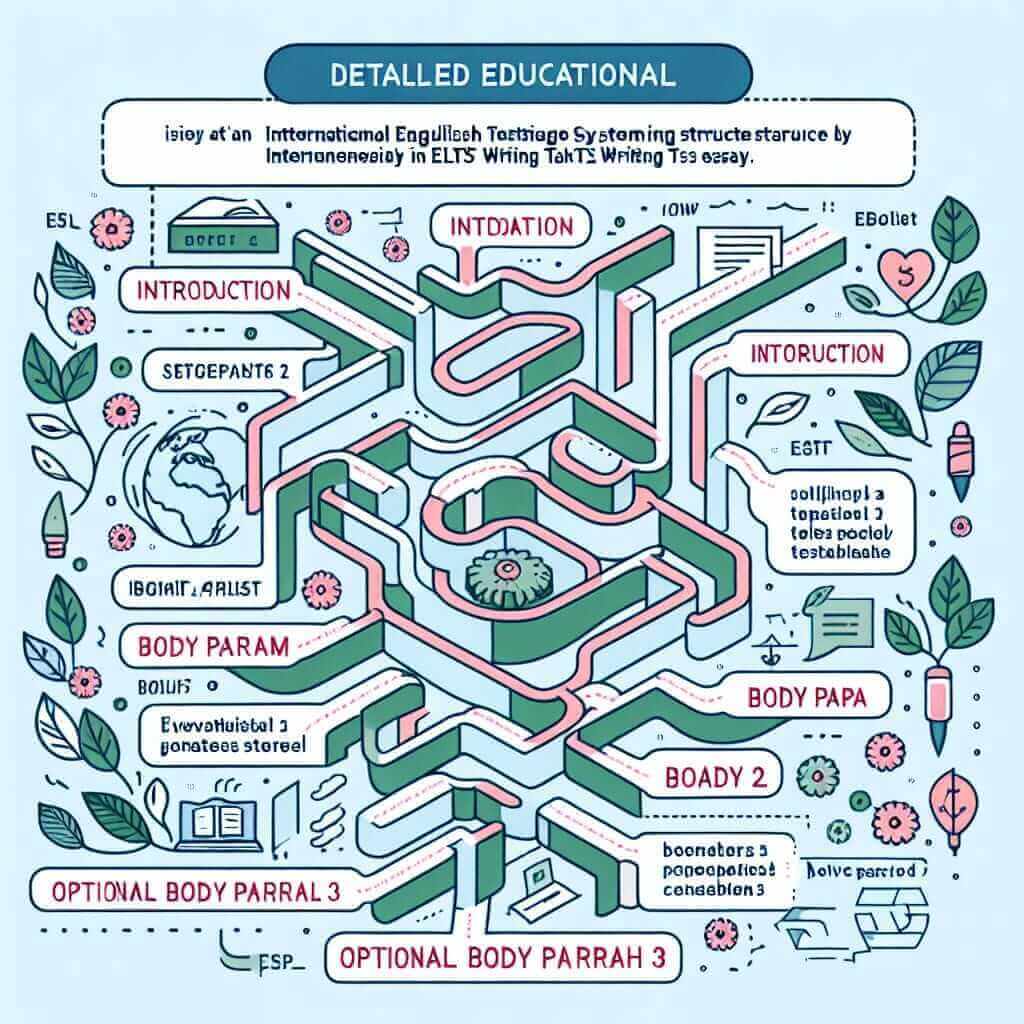Improving your IELTS Writing Task 2 structure is crucial for achieving a high band score in the Writing section of the exam. A well-structured essay not only enhances readability but also clearly presents your argument to the examiner, thereby demonstrating a good grasp of essay writing skills. In this article, we will explore strategies to enhance the structure of your IELTS Writing Task 2 essay.
Understanding the Structure of IELTS Writing Task 2
The Importance of Structure
The structure of your essay is what holds your arguments and ideas together. A clear structure makes it easier for the examiner to understand your points, thereby increasing your chances of scoring higher. Typically, an IELTS Writing Task 2 essay should have the following structure:
- Introduction
- Body Paragraph 1
- Body Paragraph 2
- Optional Body Paragraph 3 (if needed)
- Conclusion
Components of a Well-Structured Essay
Introduction
The introduction should introduce the topic and paraphrase the question. It should also include your thesis statement and outline the main points you will discuss in the body paragraphs.
Example:
Topic: Increasing the price of petrol is the best way to solve growing traffic and pollution problems.
In recent years, the escalation of traffic congestion and pollution has become a pressing issue in many urban areas around the globe. One proposed solution to these growing problems is increasing the cost of petrol. While this approach has its merits, I believe that a multifaceted approach involving public transportation improvements and stricter emission norms would be more effective.Body Paragraphs
Each body paragraph should focus on a single idea that supports your thesis statement. Start with a topic sentence, followed by explanations and relevant examples.
Example:
Body Paragraph 1:
One significant advantage of raising petrol prices is the potential reduction in oil consumption. As petrol becomes more expensive, individuals are likely to minimize the usage of private vehicles and opt for carpooling instead. For instance, a study conducted in Oslo showed a 15% reduction in single-occupant car trips following a 20% hike in fuel prices. This demonstrates that economic measures can effectively influence individual behavior towards more environmentally friendly practices.Body Paragraph 2:
However, merely increasing the price of petrol may not suffice to address the underlying problems. Improved public transportation systems are critical to making this approach viable. For example, cities like Tokyo have successfully managed traffic and pollution by investing heavily in efficient and affordable public transport. These comprehensive systems offer citizens reliable alternatives to private vehicle use, thus significantly reducing road congestion and emissions.Conclusion
The conclusion should summarize the main points discussed in the essay and restate your thesis in the context of your presented arguments.
Example:
In conclusion, while increasing petrol prices can contribute to reducing traffic congestion and pollution, it is not a standalone solution. Integrating this approach with significant investments in public transport infrastructure and stringent environmental regulations will provide a more sustainable solution to these pressing issues.
Common Mistakes and How to Avoid Them
- Wandering Off-Topic: Ensure each paragraph addresses a single idea that supports your thesis. Avoid including irrelevant information.
- Lack of Cohesion: Use linking words and phrases to connect your sentences and paragraphs smoothly.
- Weak Thesis Statement: Your thesis should clearly state your position on the topic and outline your main points.
- Inadequate Examples: Use specific examples to support your arguments; avoid generalizations.
- Overly Complex Sentences: While complex sentences can demonstrate your language ability, overcomplicating your writing can lead to errors and misunderstandings.
Effective Practice Strategies
Practice with Real IELTS Essay Questions
Practicing with actual IELTS essay questions will help you get familiar with the types of topics and questions you may encounter. Websites like the British Council or IELTS.org provide past paper questions for practice.
Plan Before You Write
Spend 5-10 minutes planning your essay before you start writing. Outline your main points and decide on the examples you will use to support each point. This will help you stay organized and ensure your essay has a clear structure.
Use Writing Prompts
Writing prompts can stimulate ideas and help you practice constructing coherent and cohesive essays. Websites like IELTS-Liz offer numerous writing prompts for practice.
Get Feedback
If possible, have a teacher or peer review your essays. Constructive feedback can highlight areas for improvement and guide your progress.
Conclusion
Improving your IELTS Writing Task 2 structure is pivotal for achieving a high score. By focusing on a clear structure—introduction, body paragraphs, and conclusion—and practicing diligently, you can enhance the clarity and effectiveness of your essays. Remember to plan your essay, use clear examples, and seek feedback to continue refining your writing skills. If you have any questions or need further guidance, feel free to leave a comment below or explore more resources on our website. Happy writing!